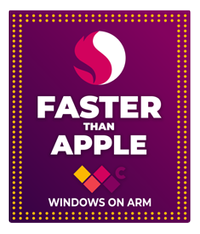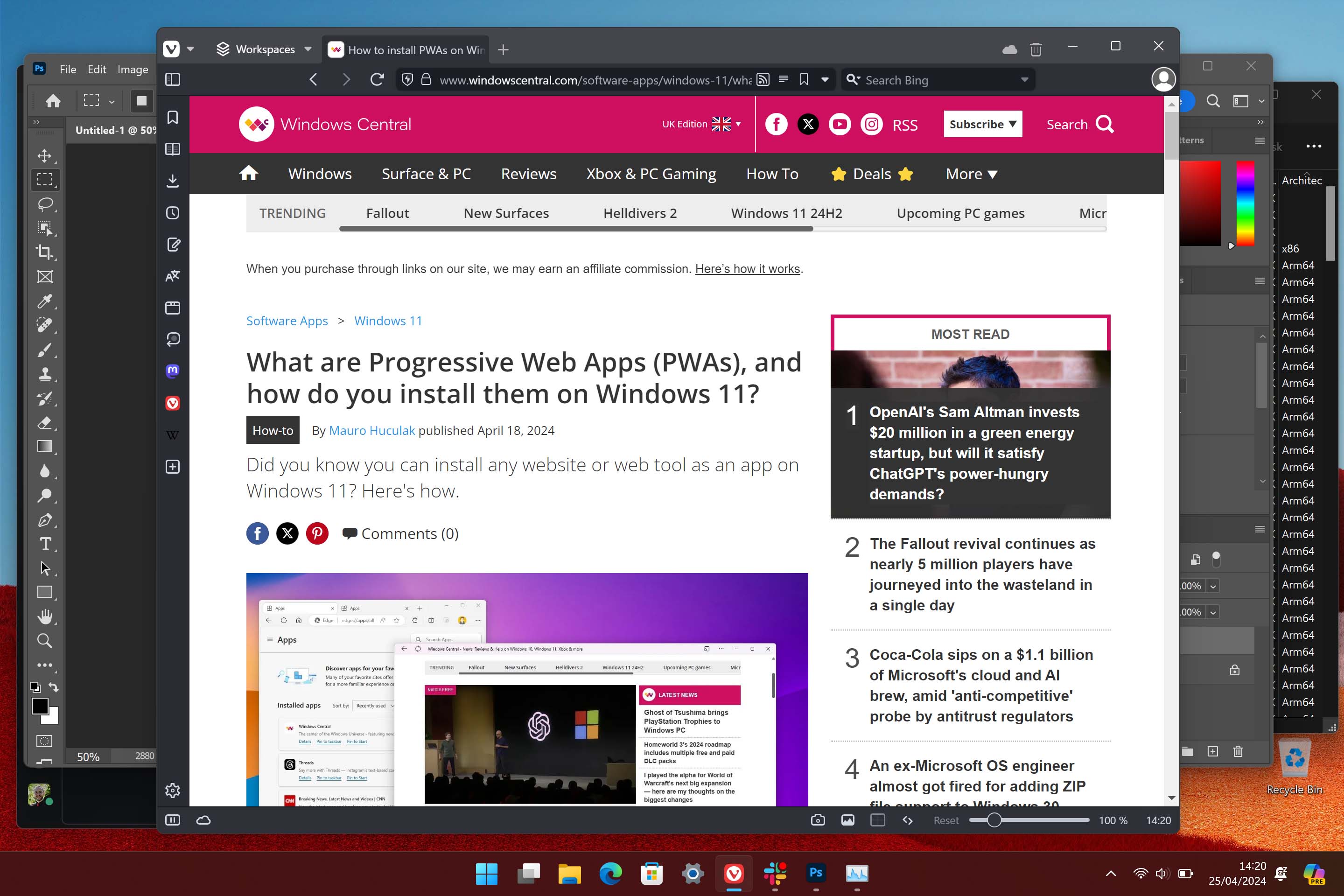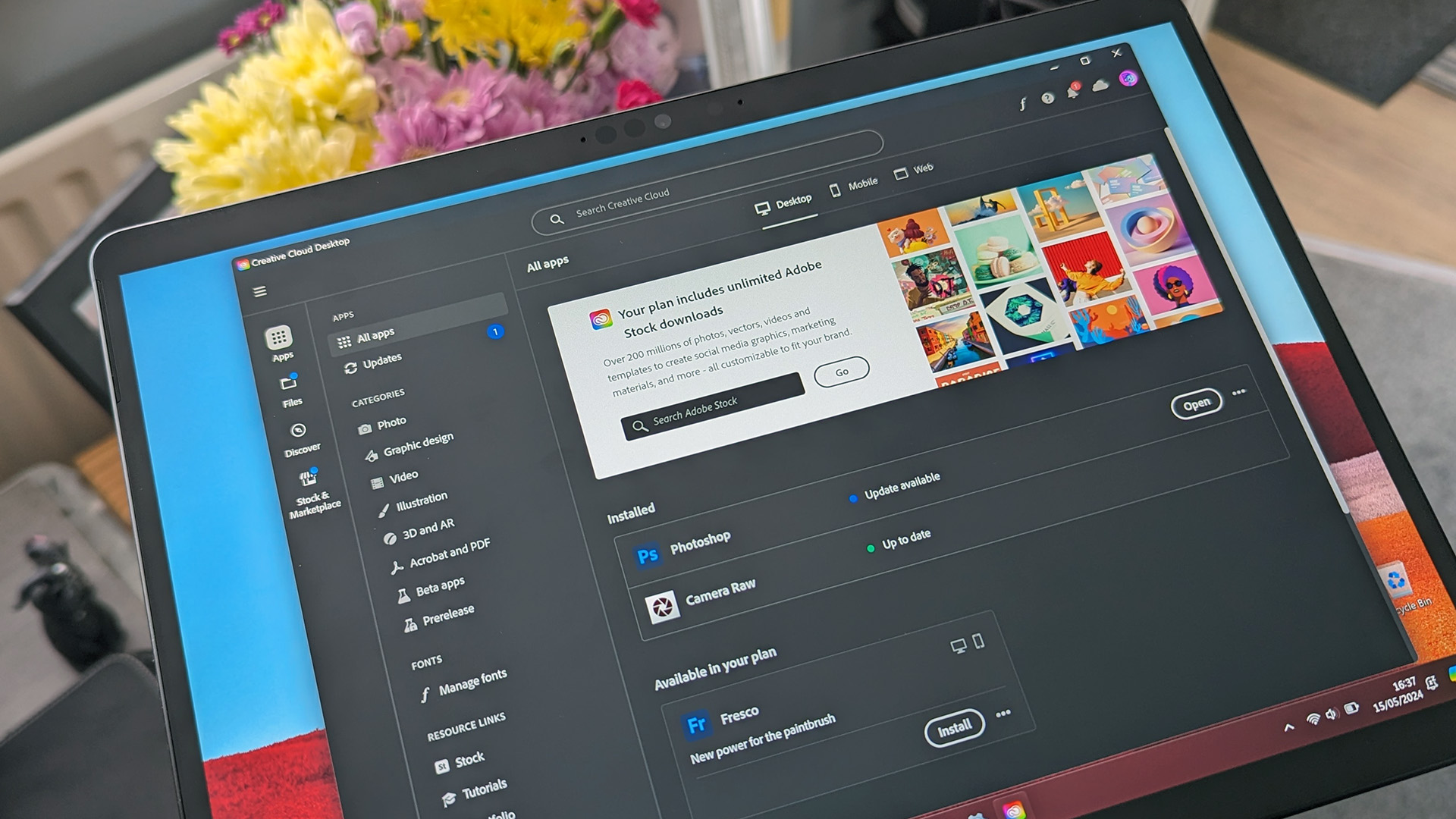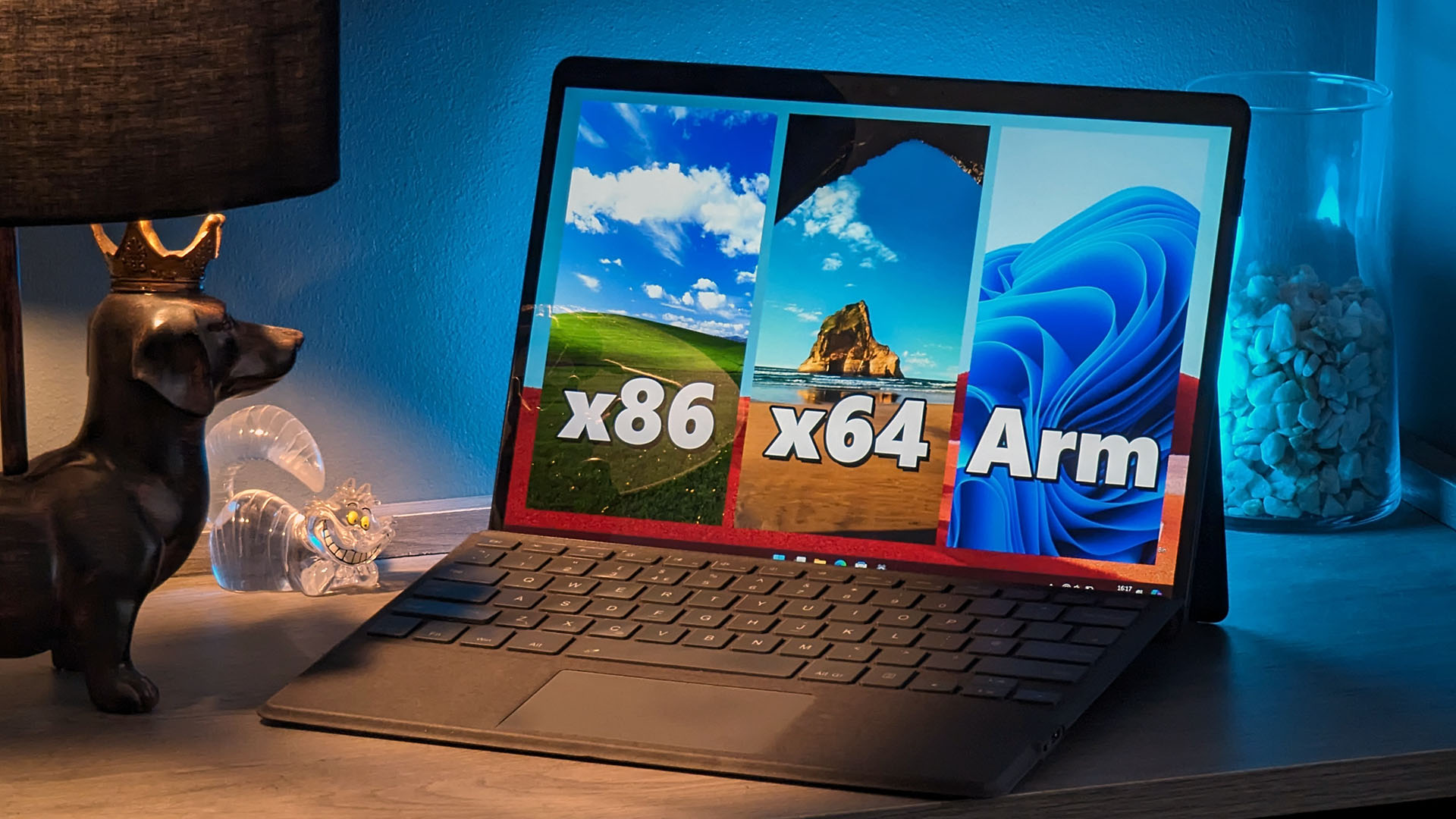Will Adobe expand native app support for Windows on Arm and Snapdragon X chips?
Looking into the state of Adobe and ARM processors and if its software suite could improve when Snapdragon X launches.


Adobe's software remains some of the most recognizable in the world, with many Windows devices pre-loaded with popular staples like Acrobat Reader to handle the dominating .PDF file type. Even its broader Creative Cloud suite contains multiple chart-topping apps like Photoshop and Premiere Pro, which compete in the professional sector as the primary choice for imagery and video projects.
With such a substantial position in the industry, it's reasonable to expect Adobe to support as many platforms and operating systems as possible, widen its user base, and remain dominant in each category. That's certainly the case for x86-64 Windows 11 PCs and macOS devices running Apple Silicon chips, but what about Windows on Arm? I inspected Adobe's offerings of ARM-native apps and any plans to adapt to a game-changing generation of Apple-busting Snapdragon X chips.
Do any Adobe apps run natively on ARM?

Adobe's native ARM64 support starts and ends with Photoshop and Lightroom, though that doesn't exclude the rest of its Creative Cloud suite from running on ARM-based Windows devices via x86-64 emulation. Although Photoshop is arguably the most widely recognized software by hobbyists and professionals who adore its powerful image editing toolkit, it's still a slim offering alongside Lightroom, the fine-tuning app aimed at photographers.
However, while Adobe builds an ARM-native version of Photoshop for compatible Windows devices like my second-hand Surface Pro X, it doesn't include complete feature parity with the x86-64 version built for desktop processors from Intel and AMD. Adobe itself has always been clear about the known differences and limitations of its ARM-native Photoshop build, even if it has generally neglected to update users on potential fixes, with February 15, 2022, listed as the last update.
Are native ARM apps a priority for Adobe?

Rebuilding a native ARM version of an app varies in complexity, and it could be challenging to allocate resources to its development for a behemoth suite like Adobe's Creative Cloud. The current user base is still relatively small compared to x86-64 users on traditional Windows PCs, though a potentially gigantic shift in ARM adoption is on the horizon since Qualcomm's Snapdragon X Elite chips revealed benchmark results that bested everything we'd tested from Intel and AMD up to that point.
x86-64 versions of Adobe apps should perform close to what we consider a 'native experience' on Snapdragon X devices,
The absolute highest-end performance gains from the new Snapdragon X Elite and its more affordable counterpart, the Snapdragon X Plus chips, will require ARM-native builds of Windows apps. However, Qualcomm boasts that its investment in x64 emulation means that through relatively gigantic advancements in sheer computing power, so in theory, running the traditional x86-64 versions of other Adobe apps like Illustrator and Premiere Pro should end up performing close to what we consider a 'native experience' on Snapdragon X devices anyway.
Will Snapdragon X PCs appeal to Adobe users?

• What is Snapdragon X Elite?
• I finally tried Windows on ARM
• PWAs are awesome for Windows
• x86-64 apps WILL work on ARM
• Best Windows on Arm laptops
• Testing accessories with ARM
If Adobe doesn't expand its suite with more ARM-native versions of its apps, it could soon fall victim to a rise in competitors who will. For example, the popular video editor and color correction suite DaVinci Resolve is coming to Windows on Arm to match its current offerings on ARM-powered Apple devices, though pricing will undoubtedly vary wildly between brands.
The open-source competitor to Photoshop, GIMP, already offers an ARM-native version of its free image editing suite. Its stock feature set might lack some features found in Adobe's paid software, but plugins for AI image generation, like OpenVINO from Intel, can help it catch up.
With alternatives potentially out-performing Adobe's world-class apps on a range of Snapdragon X-powered Windows laptops from several OEMs set to release throughout the year, the risks of ignoring ARM64 architecture and its benefits to increased battery life and overall power efficiency could be detrimental to Adobe's user retention. Qualcomm's target audience undoubtedly includes creative users, but whether Adobe will follow through on its promises to expand ARM support remains to be seen:
"We are working to ensure that our other apps run natively on these devices, but don't have release dates for all our apps yet." — Adobe, 13 Dec. 2022
As a regular Photoshop user and recent ARM evangelist (compatibility is better than you remember, honest), I'm keeping my fingers and toes crossed that Adobe commits extra funding to build ARM-native versions of its other killer apps. Any traveling creatives needing intensive image or video edits know that many laptops can't offer the battery life to compete, but upcoming Snapdragon X devices seem ridiculously capable of changing that, and I can't wait. Let's just hope that Adobe has something cooking behind the scenes to take advantage of a potential Windows on Arm renaissance.

Ben is a Senior Editor at Windows Central, covering everything related to technology hardware and software. He regularly goes hands-on with the latest Windows laptops, components inside custom gaming desktops, and any accessory compatible with PC and Xbox. His lifelong obsession with dismantling gadgets to see how they work led him to pursue a career in tech-centric journalism after a decade of experience in electronics retail and tech support.
-
domdomonom Honestly, if they offered ARM Lightroom Classic, I’ll stay subscribed to adobe. Otherwise I’m starting to look elsewhere.Reply
